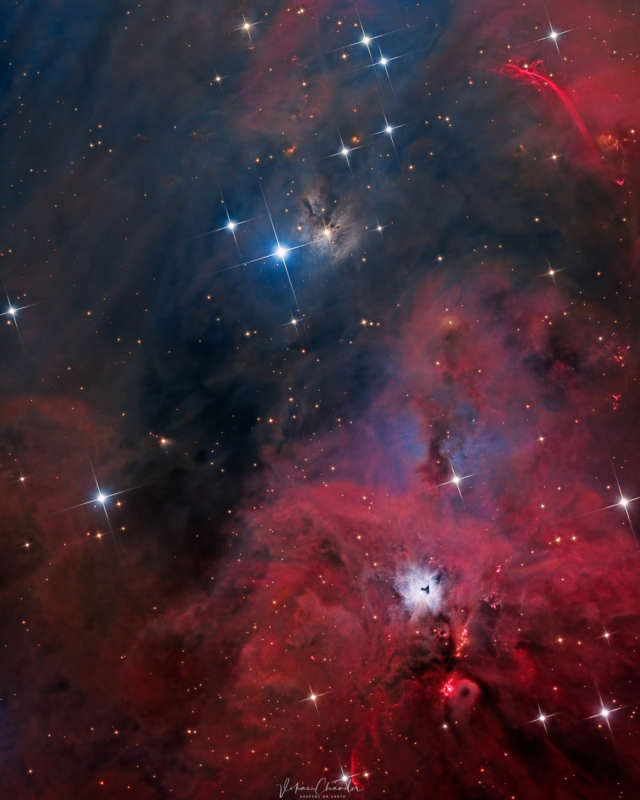
|
Credit & Copyright: Vikas Chander
Explanation:
South of the large star-forming region known as the
Orion Nebula, lies bright blue reflection nebula
NGC
1999.
At the edge of the
Orion molecular
cloud complex some 1,500 light-years distant, NGC 1999's
illumination is provided by the embedded variable star V380 Orionis.
The nebula is marked with a dark sideways T-shape at center right in
this telescopic vista
that spans about two full moons on the sky.
Its dark shape was once assumed to
be an obscuring dust cloud seen in silhouette.
But infrared data
suggest the shape is likely a hole blown through the nebula
itself by energetic young stars.
In fact,
this region abounds
with energetic young stars
producing jets and outflows with luminous shock waves.
Cataloged as Herbig-Haro (HH) objects, named for astronomers
George Herbig and Guillermo Haro,
the shocks have intense reddish hues.
HH1 and HH2 are just below and right of NGC 1999.
HH222, also known as the
Waterfall
nebula,
looks like a red gash near top right in the frame.
To create the shocks stellar jets push through
the surrounding material at speeds of
hundreds of kilometers per second.
|
January February March April May June July August September October November December |
| |||||||||||||||||||||||||||||||||||||||||||||||||||||||
NASA Web Site Statements, Warnings, and Disclaimers
NASA Official: Jay Norris. Specific rights apply.
A service of: LHEA at NASA / GSFC
& Michigan Tech. U.
Based on Astronomy Picture
Of the Day
Publications with keywords: NGC 1999 - reflection nebula - star formation
Publications with words: NGC 1999 - reflection nebula - star formation
See also:
- APOD: 2025 December 9 Á The Heart of the Soul Nebula
- APOD: 2025 September 19 Á The NGC 6914 Complex
- APOD: 2025 July 10 Á Lynds Dark Nebula 1251
- APOD: 2025 June 23 Á W5: Pillars of Star Formation
- APOD: 2025 April 28 Á Gum 37 and the Southern Tadpoles
- APOD: 2025 March 26 Á Star Formation in the Pacman Nebula
- Reflections on VdB 31
